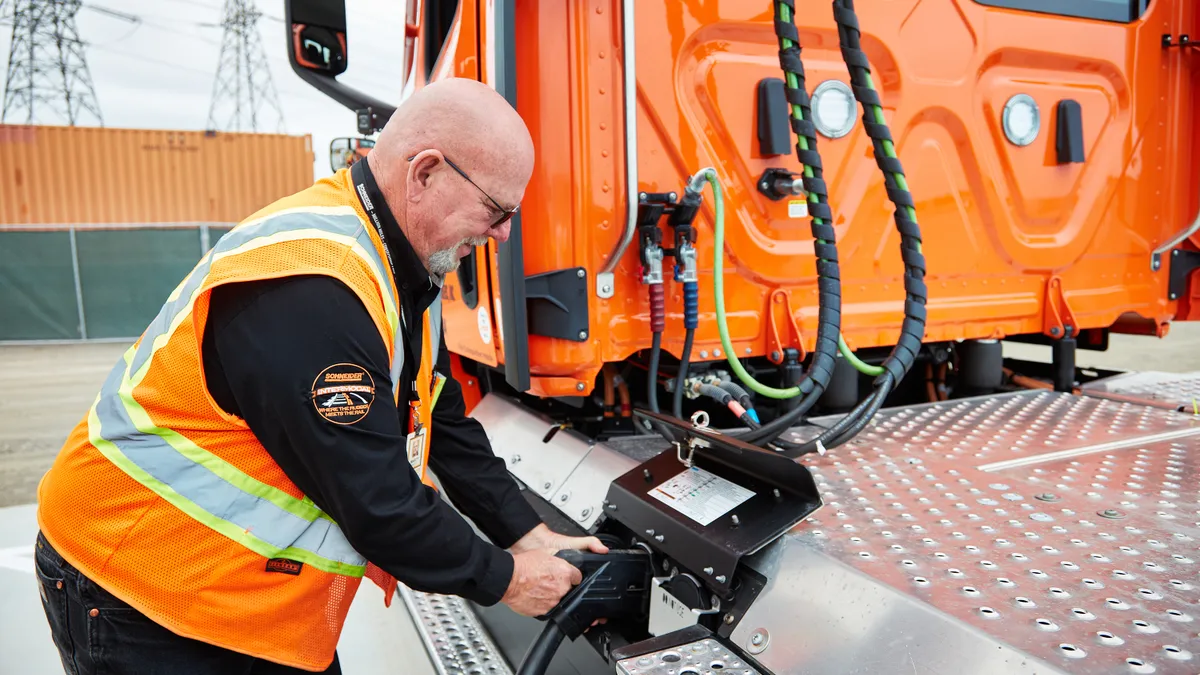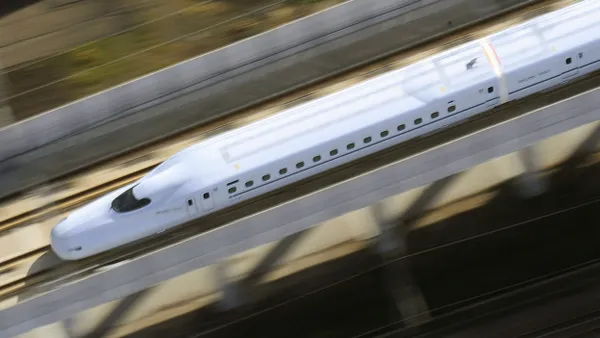Dive Brief:
- The White House released a national zero-emission freight corridor plan last week to guide medium- and heavy-duty truck charging and hydrogen fueling investments until 2040.
- Authored by the Joint Office of Transportation and Energy, the plan is meant to serve as a compass for public and private stakeholders to follow as charging and fueling infrastructure is built out along the National Highway Freight Network. The 318-page plan does not outline federal funding sources for this work.
- “These new designations and Strategy will help to grow our national EV charging network, encourage clean commerce within the freight community, and support President Biden’s goals of achieving net-zero emissions for the nation by 2050,” Federal Highway Administrator Shailen Bhatt said in the announcement of the plan.

Dive Insight:
Industry stakeholders have been calling for infusions of more federal money to build electic and hydrogen trucking infrastructure.
The Joint Office of Transportation and Energy, created as part of the Bipartisan Infrastructure Law, pointed out the need to help cover the cost in the strategy. The office is analyzing the cost and operational barriers to charging medium- and heavy-duty trucks.
“Future revisions to [the] Strategy should inform discussions related to how long-term infrastructure funding can complement private sector buildout of a national ZEF network,” the plan said.
The four-phase strategy maps interstates, intermodal hubs, ports and truck parking to show where the charging and fueling stations will be most in demand. It also breaks down the plan into three to five-year increments to establish hubs, connect corridors, expand and complete the network.
The plan seeks to help the trucking industry, zero-emission fuel providers, grid operators and other stakeholders evaluate where electricity and hydrogen needs are likely to develop.
“This all-of-government approach intends to catalyze public and private investment, accelerate industry activity, and signal electricity and hydrogen markets to plan and deploy necessary generation, transmission, and distribution projects,” the strategy said.
The strategy will prioritize federal investment in “the necessary supporting infrastructure to ensure our nation’s supply chain can continue to deliver,” ATA VP of Energy and Environmental Affairs Jacqueline Gelb said in an emailed statement.
“ATA is encouraged that the Biden administration has begun to recognize the unique challenges electrification poses to the commercial vehicle industry,” Gelb said. “Providing convenient and low-cost charging and hydrogen refueling infrastructure will be a key proof point for fleets to begin to adopt and operate zero-emission trucks.”














